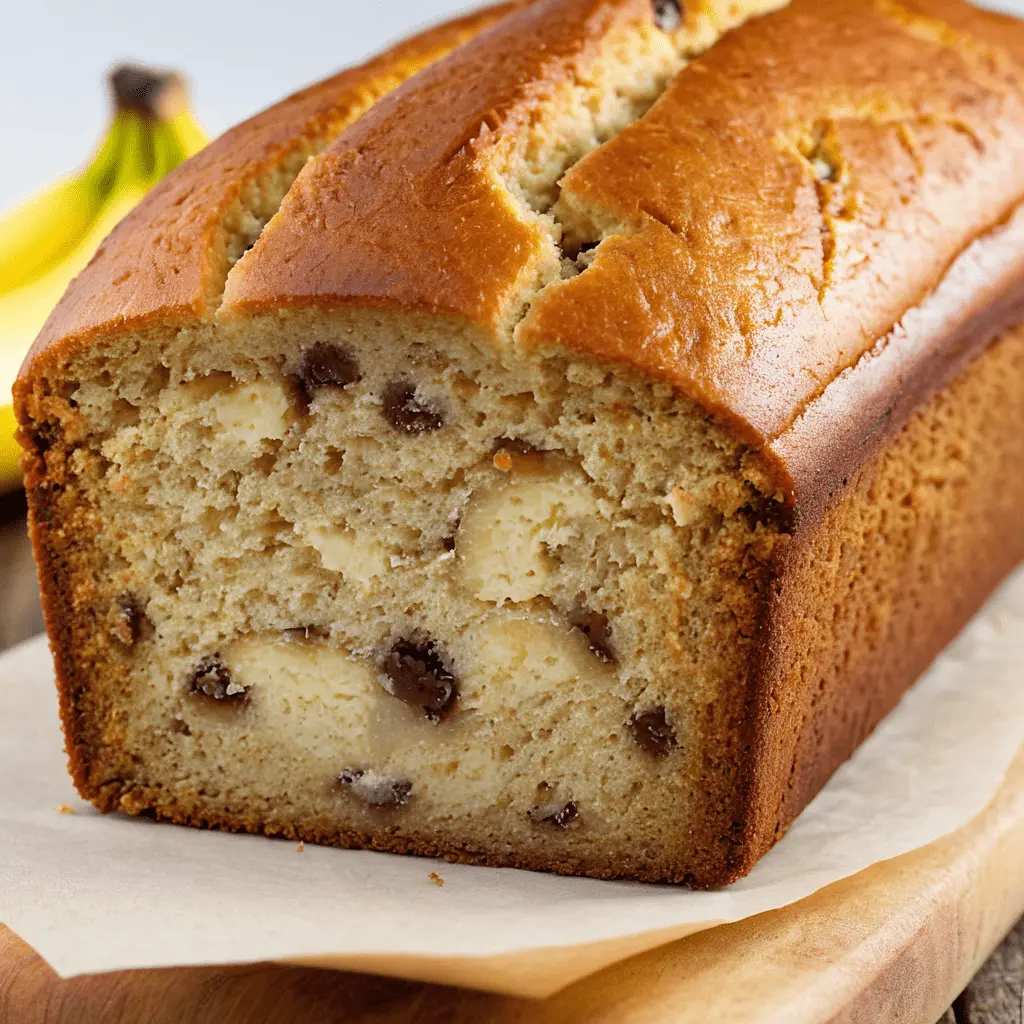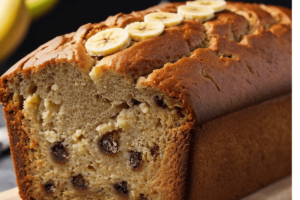Why Is My Banana Loaf Rubbery?
Banana bread is a beloved homemade treat, often enjoyed for its moist and tender crumb. However, a common issue that many bakers face is ending up with a rubbery or tough banana loaf. If you’ve ever asked yourself, “Why is my banana loaf rubbery?“, understanding the causes behind this problem is crucial to perfecting your banana bread recipe. Therefore, this article explores the various factors that can lead to a rubbery banana loaf and offers practical tips to help you avoid this baking pitfall.
1. Over-Mixing the Batter: A Common Cause of a Rubbery Banana Loaf
One of the primary causes of a rubbery banana loaf is over-mixing the batter. When you mix the batter too much, it develops gluten, which is the protein that gives bread its structure. While gluten is great for bread, it’s not what you want in banana bread. As a result, if you’ve wondered, “Why is my banana loaf rubbery?“, it might be due to over-mixing. The more you stir, the more gluten will develop, leading to a dense, rubbery texture.
Tips to Avoid Over-Mixing and Prevent a Tough Banana Bread:
- Stir the batter just until combined. The mixture should be lumpy, not smooth.
- In addition, avoid using an electric mixer, as it can easily over-mix the batter.
2. Incorrect Ratio of Wet to Dry Ingredients: Why Your Banana Bread is Gummy
The balance between wet and dry ingredients is crucial for achieving the right texture in your banana loaf. If there’s too much liquid or not enough flour, your loaf could end up being rubbery or gummy. So, if you’re asking yourself, “Why is my banana loaf rubbery?“, it might be due to an incorrect ratio of ingredients.
Signs of an Imbalance Leading to a Rubber-Loaf Texture:
- The batter is too thin or runny.
- Furthermore, the loaf is overly dense or has a gummy texture in the middle.
How to Fix the Wet-to-Dry Ingredient Ratio in Banana Bread:
- Ensure you measure your ingredients accurately.
- Additionally, use ripe bananas that are not overly soft, as they can add too much moisture.
If you’re unsure about the correct moisture balance, you can read more about the science behind baking here.
3. Baking Temperature Issues: Another Reason Why Your Banana Loaf is Rubbery
Baking temperature plays a significant role in the final texture of your banana loaf. Baking at a temperature that is too low can result in an undercooked, gummy loaf, while baking at a temperature that is too high can cause the loaf to be overcooked on the outside but undercooked on the inside. Consequently, you might be thinking, “Why is my banana loaf rubbery?” and the answer could lie in the baking temperature.
Solutions to Avoid a Gummy or Overcooked Banana Loaf:
- Bake at an optimal temperature of 350°F (175°C) for most recipes.
- Moreover, use an oven thermometer to ensure your oven is calibrated correctly.
For more tips on maintaining the correct oven temperature, check out these oven temperature tips.
4. Overripe Bananas: Could They Be Making Your Banana Bread Rubbery?
While using ripe bananas is essential for flavor, overripe bananas can add too much moisture to your batter, leading to a rubbery texture. The bananas should be soft and sweet but not mushy.
Balance the Ripeness to Avoid a Rubber-Loaf:
- Use bananas that have brown spots but are still firm.
- On the other hand, if your bananas are too ripe, reduce the other liquid ingredients slightly.
5. Using the Wrong Type of Flour: Why Your Banana Loaf is Too Dense or Rubbery
The type of flour you use can greatly affect the texture of your banana loaf. For example, bread flour has a higher protein content, which can lead to more gluten formation and a tougher loaf. Therefore, if you’re questioning, “Why is my banana loaf rubbery?“, consider whether you’re using the right type of flour.
Best Flour Types to Prevent a Tough Banana Bread:
- Stick to all-purpose flour for the best results.
- If you’re using an alternative flour like whole wheat, consider blending it with all-purpose flour to prevent a dense, rubbery texture.
6. Insufficient Leavening Agents: The Secret to Avoiding a Rubber Loaf
Leavening agents like baking powder and baking soda are crucial for giving your banana loaf its rise and light texture. Using too little or outdated leavening agents can result in a dense, rubbery loaf.
Tips for Properly Using Leavening Agents in Banana Bread:
- Ensure your baking powder and baking soda are fresh.
- Additionally, measure carefully—too little won’t provide enough lift, and too much can cause the loaf to rise too quickly and then collapse.
7. Insufficient Cooling Time: A Key Step to Prevent a Rubbery Banana Loaf
Cutting your banana loaf too soon can lead to a rubbery texture, as the loaf needs time to set. Allowing it to cool properly will ensure that the texture firms up as intended.
Proper Cooling Techniques for Perfect Banana Bread:
- Let the loaf cool in the pan for 10 minutes before transferring it to a wire rack.
- In addition, wait until the loaf is fully cooled before slicing.
8. Uneven Distribution of Ingredients: Why Some Parts of Your Banana Bread Are Rubbery
Unevenly mixed ingredients can result in certain areas of the loaf being rubbery while others are too dry. This often happens when you don’t fold in additional ingredients like nuts or chocolate chips properly.
Proper Mixing Techniques to Avoid a Gummy Banana Bread:
- Fold ingredients in gently using a spatula, ensuring even distribution without over-mixing.
- Furthermore, pour the batter into the pan in layers, adding your mix-ins between layers for more even distribution.
9. The Role of Sugar: Too Much Might Be Making Your Banana Loaf Rubbery
Sugar not only adds sweetness but also affects the moisture and texture of your banana loaf. Too much sugar can cause the loaf to be overly moist, leading to a gummy or rubbery texture. Thus, if you’re asking, “Why is my banana loaf rubbery?“, check the sugar content in your recipe.
Balance Your Sweetness to Prevent a Gummy Banana Bread:
- Stick to the recipe’s recommended amount of sugar.
- If you want a less sweet loaf, reduce the sugar gradually and compensate with a bit more flour or less banana.
10. Quality of Equipment Used: How Your Baking Tools Can Cause a Rubbery Loaf
The quality of your baking equipment, particularly the loaf pan, can influence the texture of your banana loaf. Old or poor-quality pans can cause uneven baking, leading to a rubbery texture in some parts of the loaf.
Recommendations for High-Quality Baking Equipment:
- Use a high-quality, heavy-duty loaf pan for even heat distribution.
- Moreover, consider replacing old pans that no longer provide consistent results.
Frequently Asked Questions (FAQs) About Rubbery Banana Bread
Why is my banana loaf dense instead of light and fluffy?
This is usually due to over-mixing the batter or using the wrong type of flour. Therefore, ensuring proper mixing and using all-purpose flour can help achieve a lighter texture.
Can I use whole wheat flour for banana bread without making it rubbery?
Yes, but it’s best to mix whole wheat flour with all-purpose flour to prevent the loaf from becoming too dense and rubbery.
What can I do if I’ve already over-mixed the batter?
If you’ve already over-mixed, try adding a bit more baking soda to help the loaf rise and reduce rubbery texture.
How can I tell if my banana bread is done without over-baking it?
Insert a toothpick into the center of the loaf. If it comes out clean or with a few crumbs, the bread is done. Be careful not to over-bake, as this can lead to a tough texture.
What adjustments should I make for high-altitude baking?
At high altitudes, you may need to reduce the amount of leavening agents and increase the baking temperature slightly to prevent a rubbery loaf.
Conclusion
Achieving the perfect banana loaf is all about balance—proper mixing, the right ratio of ingredients, and optimal baking conditions. By understanding the causes of a rubbery banana loaf, you can make the necessary adjustments to enjoy a soft, moist, and delicious treat every time. Therefore, if you’ve ever wondered, “Why is my banana loaf rubbery?“, experiment with these tips and tricks to perfect your recipe, and you’ll never have to deal with a rubbery banana loaf again!


